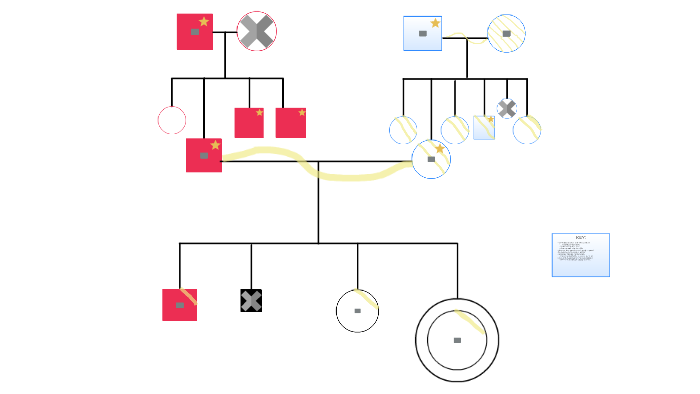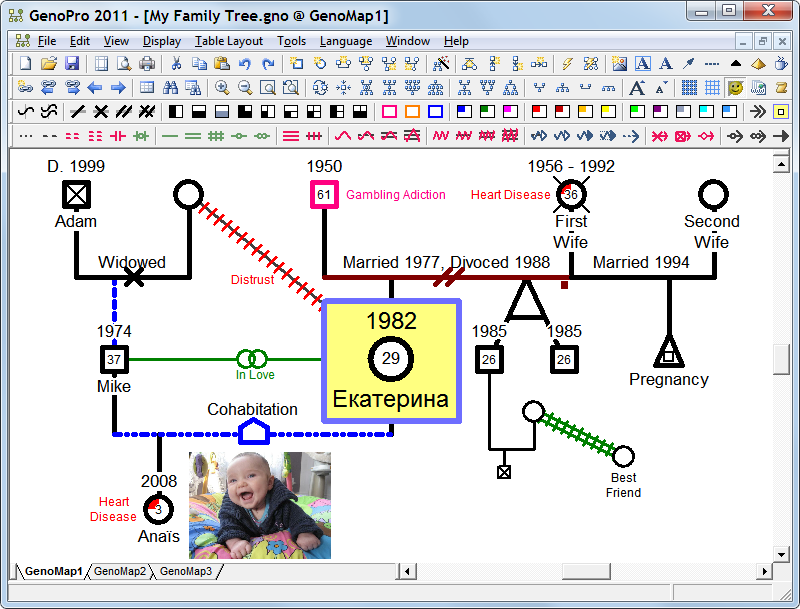
With support, even children as young as 5 years old can engage in this activity. Family members then select, from several miniature people, animals, and objects, an item to represent each person on the genogram, and take turns talking about their choices. The genogram is first drawn on a large sheet of poster board or paper and should include all biological and legal members of the family, as well as any other people important in the family and even pets. In this version, miniature toys are incorporated into the family creation of a genogram. This book includes a particularly useful chapter for play therapy treatment planning – Family Play Genograms, co-authored with Eliana Gil ( Gil, McGoldrick, Gerson & Petry, 2008). The genogram can be completed by hand and inserted into the ecosystemic intake, or it may be completed with one of several genogram computer programs now available, e.g., For additional information on creating genograms, see Genograms: Assessment and Intervention, 3rd edition ( McGoldrick, Gerson, & Petry, 2008). Intergenerational child abuse and/or substance abuse and/or mental illness should also be noted. If necessary, the genogram should be expanded to show how these individuals fit into the family tree.

Again, this will give a more complete picture of the family and the nature of their relationships. It may be useful to include unrelated persons who live in the same household as part of the genogram. Often, families do not mention these members as they are not currently a part of the family. This means you may have to ask directly about miscarriages, stillborn infants, and children who died in infancy. Īll family members, living and dead, should be included.Several items should be specifically noted on the genogram. The genogram should go back at least two generations and include all first-order relatives to provide as clear a picture of the family as possible. A sample of the formats and symbols used to represent various familial relationships is included in the Intake form.

The selected workshops included the following topics: (1) self-care and internalized oppression (2) the cultural genogram (3) skills and strategies for facilitating challenging discussions on race, power, and privilege in our work relationship and (4) unpacking race at the family team conference meeting.The genogram gives the play therapist a visual representation of the family structure and history. Facilitators were selected based on their understanding of racism and its impact on oppressed communities as well as the effects of internalized racial oppression. The strategy consisted of four workshops over nine months, facilitated by consultants with expertise in racial equity and child welfare. The strategy also incorporated a cultural humility perspective (Ortega & Fuller, 2011) in which the child welfare worker takes on the role of a learner about cultural experiences, which equalizes the power in the worker-client relationship. While the approach to staff development was based on the research around individual worker bias in child welfare, the proposed training framework incorporated an ecological structural perspective with the notion that each worker's decision-making processes are influenced by larger societal factors (Chisom & Washington, (1996).

This process gave them an opportunity to help identify the challenges they experience in engaging families. Students volunteered to work with the facilitators and chairpersons to share in the content and process of the workshops.


 0 kommentar(er)
0 kommentar(er)
